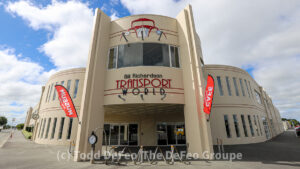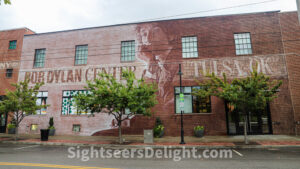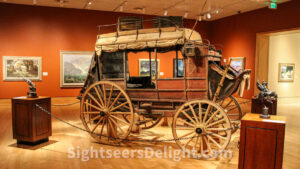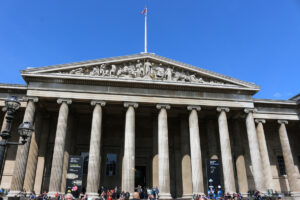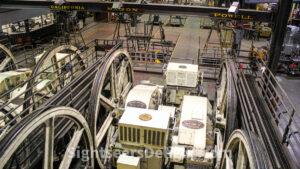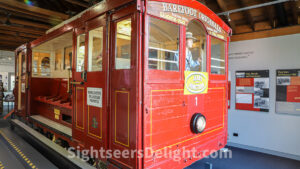Elected to the nation’s top political office in 1888, Benjamin Harrison remains the only president from the state of Indiana (he was born in 1833 in North Bend, Ohio, but moved to Indianapolis in 1854). In 1867, Harrison purchased a tract of land on North Delaware Street near downtown Indianapolis, and it was on this site Harrison built an impressive Italianate structure. In 1966, the house was declared a National Historic Landmark. From the 1950s until a 1974 renovation, guests could visit the Benjamin Harrison Home by appointment only. Following the renovation, the home opened for regular hours.
46202
The story of Betsy Ross is one of the great American legends. As the story goes, Gen. George Washington approached Ross and asked her to make a flag. She obliged, and the rest is history. While it’s a great story, it’s most likely just a legend. Still, a visit to the Betsy Ross House is a worthy trip to learn more about Ross, a seamstress who died in 1836. The house dates to 1740 and is said to be Ross’ residence from 1776 until 1779. However, there is some debate about whether this is actually the house in which she lived.
19106
The Bob Dylan Center is located in Tulsa’s burgeoning arts district, just steps from the city’s Woody Guthrie Center. The Bob Dylan Center features cutting-edge and immersive technology in a multimedia environment designed to impress visitors new to Dylan and long-time fans and aficionados. Visitors can listen to rare recordings, watch rarely seen videos and view one-of-a-kind memorabilia ad artifacts that tell the story of “the poet laureate of rock and roll.” The Bob Dylan Center and the Woody Guthrie Center operate under the auspices of the American Song Archives, a project of the George Kaiser Family Foundation. The foundation acquired Dylan’s archives in 2016 and Guthrie’s in 2010.
74103
The Booth Western Art Museum opened in August 2003 and showcases Western art. The Smithsonian Institution affiliate is said to be the largest permanent exhibition space for Western art nationwide. The 120,000-square-foot museum is the second-largest art museum in Georgia, featuring works by Frederic Remington, Albert Bierstadt, George Caitlin and Charles Russell. Visitors can explore America’s history through contemporary Western artwork, a Presidential Gallery and a Civil War art gallery.
Directions: Booth Western Art Museum, 501 N. Museum Drive, Cartersville, GA 30120. Take I-75 to exit 288 – Main Street, Cartersville. Head West. Follow Main Street (Highway 113/61) into the business district, approximately 2.2 miles. Turn right on Gilmer Street, travel two blocks under the bridge, and the museum is on the left. Free parking is available in the Tabernacle Baptist Church parking lot on Gilmer Street, across from the Museum entrance.
Hours (as of April 12, 2023): Tuesday, Wednesday, Friday, and Saturday: 10 a.m. – 5 p.m. Thursday: 10 a.m.-8 p.m. Sunday: 1-5 p.m. Closed Mondays, New Year’s Day, July 4, Thanksgiving Day and Christmas Day.
Admission (as of April 12, 2023): Adult: $13.00; Senior (65+): $11.00; Student (with ID): $10.00; Children 12 and under are free (must be accompanied by parent or guardian); Active Military Personnel (with ID): Free (half price regular admission for all immediate family members of the active-duty person); Booth Museum members are free; First Thursday of each month: free admission for all between 4-8 p.m.
30120
The Bristow Train Depot and Museum is located in the historical Bristow train depot, constructed in 1923. Bristow grew up along a railroad running between Sapulpa and Oklahoma City. The museum features information about the town’s history and the people who shaped it. A former Atchison, Topeka & Santa Fe Railway caboose, built in 1929 and rebuilt in 1969, is on display next to the museum. It bears the paint scheme of the St. Louis–San Francisco Railway (the “Frisco”).
74010
The British Museum is home to one of the most significant collections of artifacts related to human history, art and culture, including the Rosetta Stone. The museum is home to more than 100,000 objects from the Classical world, making it one of the most comprehensive collections of antiquities from that era. It was established in 1753 and primarily based on the collections of the physician and scientist Sir Hans Sloane. The museum, located in the Bloomsbury section of London, first opened on Jan. 15, 1759. More than 5.8 million people visit the museum annually, making it the most visited museum in England.
The San Francisco Cable Car Museum on Mason Street in San Francisco’s Nob Hill neighborhood is the perfect museum for anyone who wants to learn more about the history of the city’s unique attraction. The museum includes a number of old cable cars and exhibits about how they operate. Visitors can also see the powerhouse and the actual cables that pull cars up and down the city’s many hills.
94108
The Cable Car Museum opened in December 2000 in the former winding house, which operated from 1902 until 1978, at the Kelburn end of the Wellington Cable Car. The museum houses a pair of original grip cars that once ran along the line. No. 1 is in red 1970s livery and features contemporary advertising, while No. 3 was restored in 2005 to a green livery dating to circa 1905; a San Francisco Cable Car bell was also added. If nothing else, the area around the museum offers some of the best views of Wellington.


